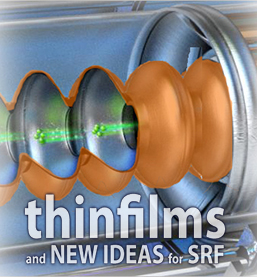Speaker
Description
The development of specialized materials is required to surpass the material limits of bulk Nb superconducting radio frequency (SRF) cavities. Indeed, SRF is a surface phenomenon in superconducting materials with an RF penetration depth of hundreds of nanometers. At these thicknesses, thin films can be tuned to achieve specific superconducting and RF properties. Layering thin films provide potentially even greater improvement. Theoretical analysis [1] of multilayer structures of superconductor/insulator/superconductor (SIS) materials may slow magnetic flux penetration in accelerator cavities, allowing acceleration gradients that are currently not achievable in SRF cavities
The fabrication of small-scale samples allows cost-effective tests of the parameters predicted by this theory. One such essential parameter is the penetration field of magnetic vortices. Measurements with a superconducting quantum interference device (SQUID) is a trusted technique for these parameters, but with thin films, multiple issues arise. By changing the geometry of the applied magnetic field, a 3rd harmonic magnetometer can solve some of these problems [2] allowing the measurement of the magnitude of the first flux penetration (Hfp). In addition, this measurement will help establish the optimum thickness to enhance the Hfp in SIS structures.
The 3rd harmonic magnetometer consists of three interworking systems, thermal control, signal analysis, and a Cu coil to generate the probe magnetic field and measure the 3rd harmonic signal. The thermal system allows active temperature control of the sample and lessens sample heating from the coil, which can measure fields up to 130 mT. The signal analysis system analyzes the noise floor and fits the 3rd harmonic response to extract Hc1 and Tc. This presentation examines the current 3rd harmonic development efforts at Jlab, including interactions of the three interlinked systems and plans for the use of the system on multilayer SIS structures.

